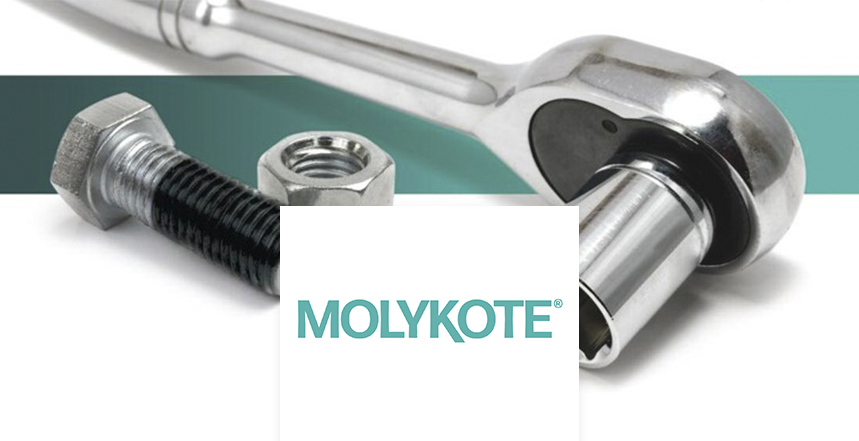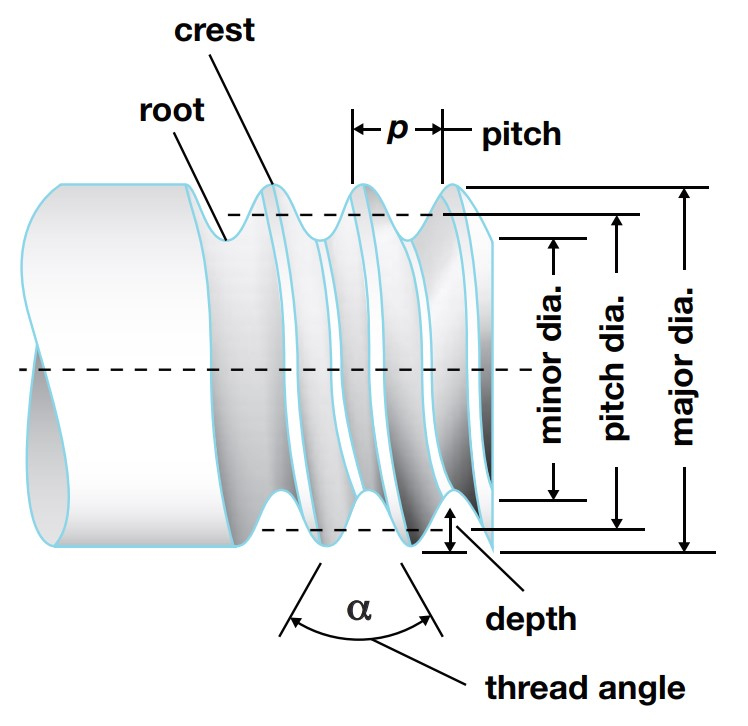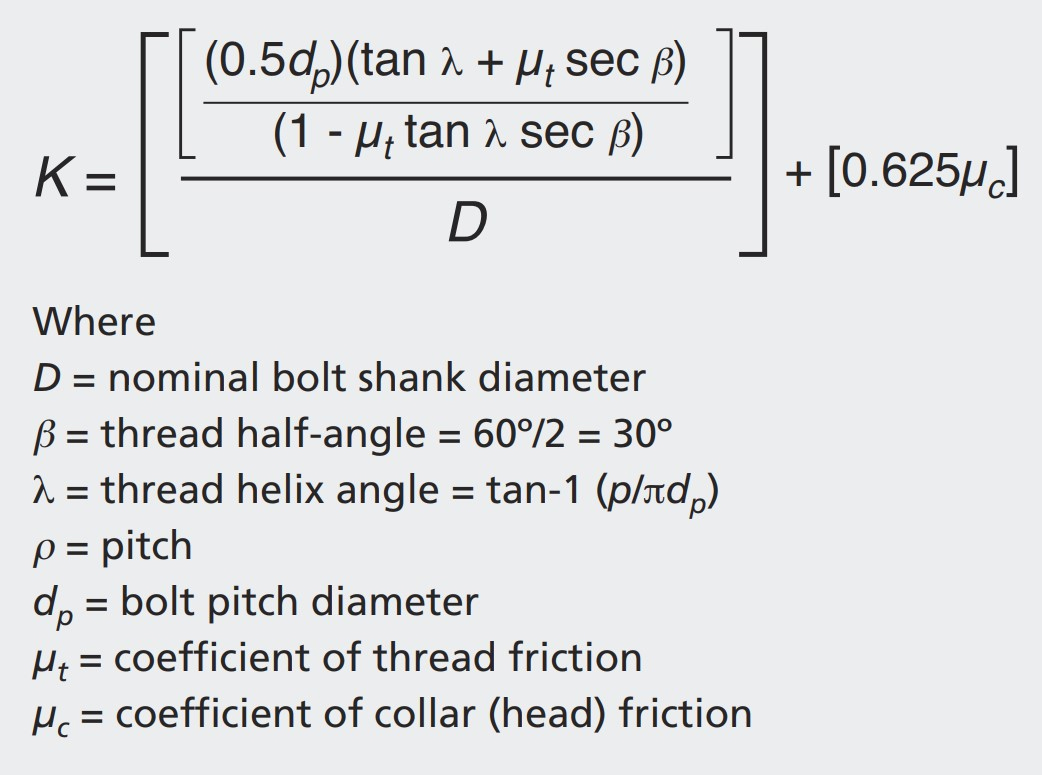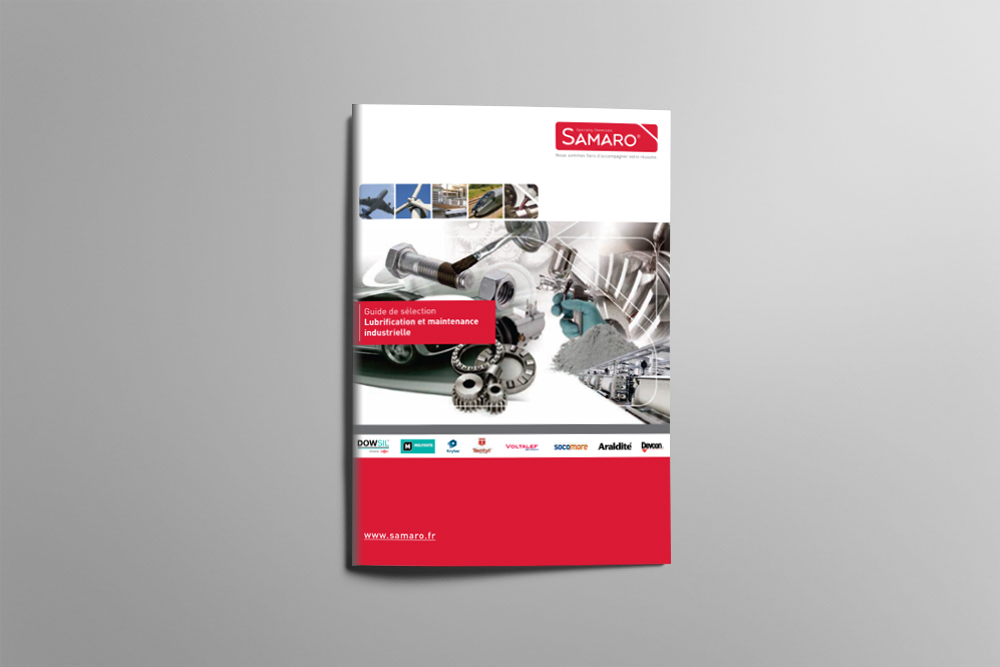Lubrication solutions for threaded connections

DuPont™ – Molykote® Lubricants
For over half a century, OEM designers, maintenance engineers and materials engineers around the world have relied on the Molykote® brand for performance and expertise to prevent or solve many lubrication problems.
Formulated for extreme loads and environments, Molykote® lubricants are also ideal for normal service lubrication. They offer extensive benefits over conventional lubricants, such as
- Long component life
- Extended lubricant life
- Extended maintenance intervals
- Time and cost savings
With technical centres around the world, our extensive product choices can reach you wherever you are to provide Smart Lubrication™.

Improvement of the performance of threaded connections
Threaded connections offer several advantages, including convenient disassembly, repeated use of a fastener and accurate reassembly. However, without proper lubrication, these benefits can be lost, resulting in significant equipment challenges and reliability issues.
By notifying :
- Inconsistent coefficients of friction, resulting in uneven bolt tension.
- stick-slip
- Stress corrosion cracking
- fretting wear
- Seizure
Molykote® brand lubricants can help your threaded connections perform well in service, from initial assembly to repeated disassembly. They are specially formulated to withstand harsh conditions, operate over a wide range of operating temperatures and resist the effects of heavy loads, salt spray or other contaminants.
The benefits of good lubrication
Lubricants are used to reduce friction and wear, protect against corrosion and dissipate heat.
The use of carefully selected lubricants can help bypass some of the common failure mechanisms associated with threaded connections. The key functions of good lubrication are
- Provide a constant coefficient of friction (µ).
- on the mating surfaces, allowing designers and applicators to minimise the complexity of achieving appropriate preload forces and torque specifications for connectors.
- It limits the effects of temperature and load variations, thereby reducing fatigue failure rates.
- Forms barriers between the substrates and the oxygen gas layer
- Prevent the formation of unwanted scale on threaded surfaces
- Provide protective coatings to surfaces in contact with connectors
- Reduces the effects of oxide layer depletion, thereby reducing the occurrence of fretting, galling and shearing.
- Reduces exposure to corrosive, hydrogen-rich, low melting point metal environments, thereby reducing stress corrosion cracking and hydrogen and solder embrittlement.

Tightening torque
Adequate torque is required to achieve proper bolt tension and elongation. The torque must overcome all sources of friction before elongation can occur. Friction in the thread and bolt head can be reduced and made constant by the addition of a lubricant.
The torque calculations required for correct elongation of bolts are based on the geometry of the threaded fasteners and the friction of the thread and bearing surfaces. The friction factor applied to the torque calculations is called the K-factor. The friction coefficients of the thread and bolt head are used to calculate the K-factor. It is therefore through lubrication that the friction and K-factor can be controlled to ensure proper bolt tension and elongation for a derived torque value.
During assembly, torque energy is first consumed to eliminate friction. The remaining energy is consumed by the elongation of the bolt (which provides the clamping force). Without proper lubrication, too much torque is used to overcome the friction, resulting in insufficient bolt elongation.

K-factor formula

Definition of failure mechanisms
Unequal friction coefficients (µ)
- High µ of the contacting surfaces (head, nuts, shank and threads) can lead to increased torsion of the fastener and reduced clamping force.
- A low µ of the contacting surfaces can lead to excessive elongation of the bolt.
Stick-slip
The difference between static and kinetic friction when two surfaces are in contact.
Stress corrosion cracking
At high temperatures, sulphur diffuses into the grain boundaries, producing high stress points. The sulphur then combines with nickel (from alloy steels) to form sulphide crystals. These crystals grow, increasing stress and creating larger cracks.
Fretting
When vibrations cause the oxide layers to wear, the oxide particles clog the internal clearances, resulting in seizure.
Seizure
Caused by fretting, oxide-free surfaces weld together under extreme pressure, preventing disassembly.
Not all lubricants are the same.
Different by design
Greases, anti-seize pastes and anti-friction coatings are all uniquely formulated to meet different challenges in the field and keep equipment in good working order.
Greases contain high concentrations of base oils, which create the lubricating film between surfaces necessary to reduce friction and prevent wear.
The formulations of anti-seize pastes and anti-friction coatings are different. The base oil of these materials simply carries the high concentration of solid lubricants directly to the point of lubrication. These solid lubricants are not subject to evaporation, and as temperature or pressure increases, the lubricating films retain their thickness – ensuring effective, reliable and long-term lubrication of the threaded surface.
To ensure that threaded connections can be assembled and disassembled over time, the lubricant must remain in place, even in harsh environments. Molykote® brand anti-seize pastes and anti-friction coatings offer effective and long-lasting solutions. These lubrication solutions form a protective layer between threaded surfaces, making assembly and disassembly easier, while protecting against wear and corrosion that can lead to connection failure.
Greases are designed to bleed off the base oils, which provide lubrication. But in threaded connections, the lubricant cannot withstand a high load and the base oil evaporates, reducing the life of the grease.
Anti-seize pastes contain a high concentration of solid lubricants to protect industrial components against seizure, fretting corrosion, slippage, binding or damage. They provide corrosion protection, resistance to water washout and a consistent coefficient of friction. These solid lubricants stay in place – even at high temperatures and under heavy loads – to help provide long-term lubrication. To ensure optimum performance of threaded connections, the appropriate Molykote anti-seize paste should be selected for the application conditions.
Anti-friction coatings are paint-like products that form a lubricating film that covers and smoothes surface roughness. This optimises friction control, even under extreme loads and working conditions. However, the effectiveness and service life of an AFR is greatly affected by the pre-treatment of the component surface, such as degreasing, phosphating, sandblasting and anodising.
Typical properties of solid lubricants used in anti-seize paste and anti-friction coating formulations
By using a combination of different types of solid lubricants in paste formulations, we achieve increased protection against fretting corrosion, improved load carrying capacity and wear prevention. The sum of what they can do together is greater than what they offer separately.
| Graphite |
| High temperature stability |
| Good lubricant under moisture |
| Low coefficient of friction at high loads |
| Protects against fretting corrosion |
| Molybdenum disulfide (MoS2) |
| High load capacity |
| Wide temperature range |
| Excellent adhesion |
| Protection against fretting corrosion |
| Friction decreases with increasing load |
| Prevents stick-slip |
| Should not be used in wet environments |
| Polytetrafluoroethylene (PTFE) |
| Colorless |
| Low load capacity |
| Low coefficient of friction at low load |
| Good chemical resistance |
| Good for reducing sliding friction |
| Copper |
| High load capacity |
| High temperature stability |
| Should not be used with stainless steel at temperatures above 1000°C |
| May promote galvanic corrosion |
| White Solids |
| Protects against fretting corrosion |
| Suitable for high temperatures |
| Excellent adhesion |
Anti-seize pastes
Molykote® anti-seize pastes are high performance products specially formulated for harsh conditions. Unlike conventional greases or compounds, Molykote anti-seize pastes create and maintain a lubricating layer, despite extreme loads and temperatures.
Molykote® pastes provide :
- Wear protection
- Reliable performance over wide temperature ranges
- Constant coefficient of friction (µ)
- Resistance to water washout
- Protection against corrosion
- Immediate lubrication upon application
- Long-term lubrication
The easy, fast and precise application of anti-seize pastes can be done by brushing or pumping. Some anti-seize pastes are also available in spray form.
Anti-friction coatings
Molykote® anti-friction coatings are very useful for parts exposed to dusty environments or inaccessible areas where long term lubrication is desired. Parts can be pre-lubricated in a clean environment to reduce handling during on-site assembly operations.
Molykote® RAFs are formulated to provide these benefits after curing:
- Dry lubrication
- Non-flammable coating
- Film that does not attract dirt and dust
- Additional protection against corrosion
- Long-term lubrication without evaporation
- Effective lubrication even after a long service life
Application methods include hand or drum spraying, dipping, centrifuging, brushing, roller coating or printing. The best application method is up to the end user and depends on the geometry of the part to be treated.
Is dry lubrication required?
- YES, my application is exposed to dust, dirt and debris and would benefit from dry lubrication.
- Choose Molykote® anti-seize coatings.
- NO: Choose Molykote® brand anti-seize pastes.
Choosing the right lubricant
The Molykote anti-seize pastes and Molykote anti-friction coatings (AFCs) featured in this brochure are specially formulated for use on threaded connections, helping to ensure long-term protection, reliability and productivity.
Although Molykote anti-seize pastes and Molykote anti-friction coatings offer many similar benefits, they perform better in specific applications:
The performance of Molykote anti-seize pastes does not require extensive surface preparation, so they are particularly useful in the field.
Molykote AFCs should be applied to surfaces that can be thoroughly cleaned and dried, and are often prepared in a clean environment as a technical solution to help improve maintenance.
When used together, Molykote® anti-seize pastes and AFCs can offer synergistic performance.
You can use the following tables to select the Molykote lubricant that best meets your needs.
Selection chart for Molykote® brand anti-seize pastes.
The use of anti-seize pastes is one of the best ways to reduce and control friction in threaded connections, ensuring long term performance and easy disassembly and reassembly. To determine the appropriate anti-seize paste, consider the load, environment, temperature and speed of your application. Below is a general description of the Molykote anti-seize pastes that DuPont considers best suited for threaded connections.
Tableau de sélection des revêtements antifriction de marque Molykote® (RAF)
L’utilisation d’un RAF est l’un des meilleurs moyens de réduire et de contrôler le frottement dans les raccords filetés, de garantir des performances à long terme et de faciliter le démontage et le remontage. Pour déterminer l’RAF approprié, n’oubliez pas de prendre en compte les exigences de service, la méthode de revêtement souhaitée et les avantages spécifiques aux différentes applications. Vous trouverez ci-dessous des descriptions générales des RAF Molykote que DuPont considère comme les mieux adaptés aux raccords filetés.
 |
 |
 |
 |
 |
 |
 |
In this video, the benefits of DuPont Molykote™ anti-seize pastes :
More informations :
Need information on MOLYKOTE® lubricants ? Contact our technical department on +33 426 680 680 or fill in our contact form.
You can also download our selection guide dedicated to industrial lubrication and maintenance:
Source : www.dge-europ.com










